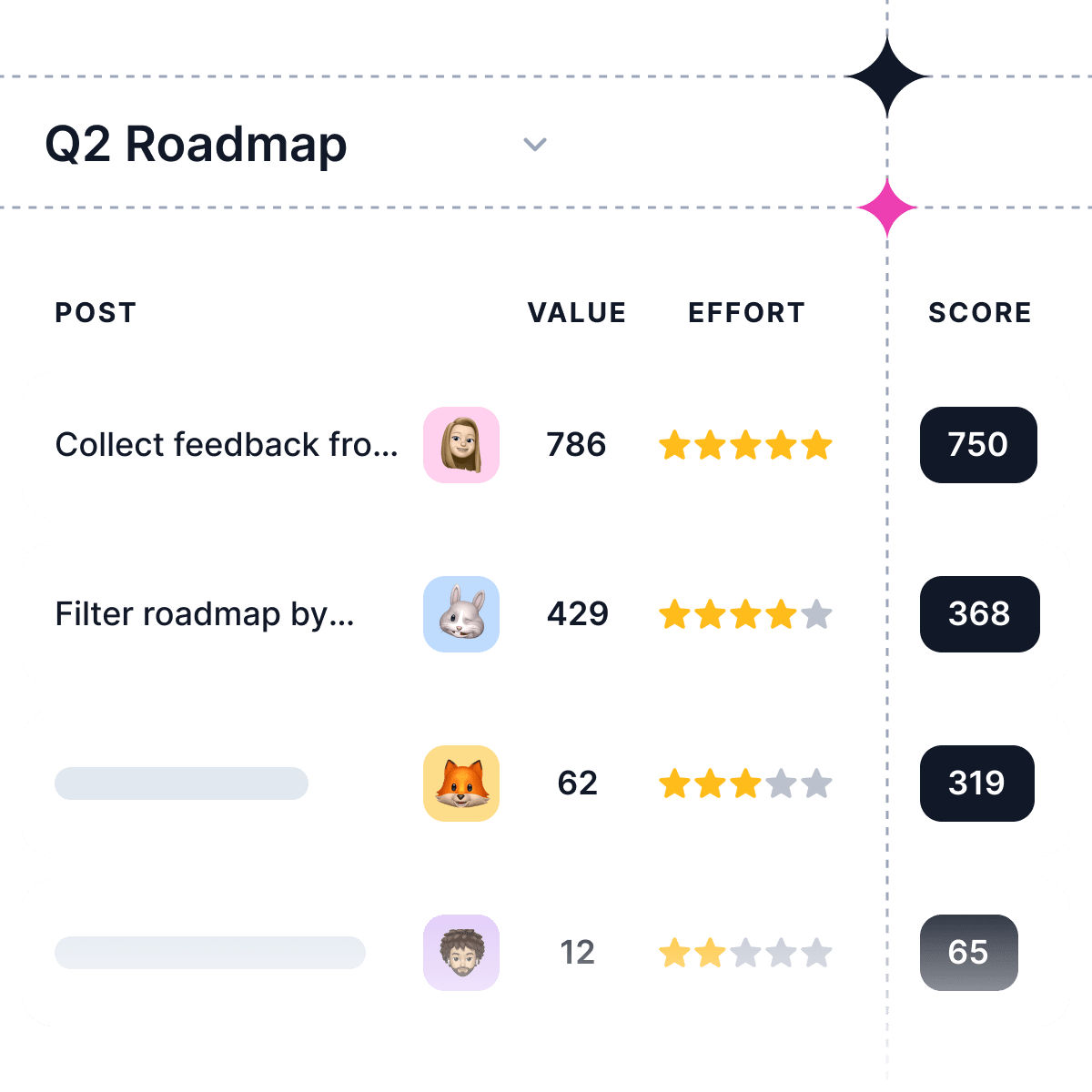Managing customer feedback can be a daunting task, but it's necessary for the growth of your business. It's easy to get overwhelmed by the sheer amount of data that your customers provide you with each day, and it can be difficult to figure out what exactly you should do with all of those comments and ratings.
Tired of hearing about "the customer is always right"?
You're not alone.
In fact, most founders get so tired of hearing that phrase that they don't even want to talk to customers anymore.
But here's the thing: without customer feedback, you're shooting in the dark and hoping for the best. You may be getting some things right but there are probably plenty of things you could be doing better.
Once you've identified the problem, it's time to figure out how to solve it. Here are some tips for managing customer feedback and turning it into actionable customer insights for your SaaS company:
-
Make sure you have a system, like Supahub, in place for collecting and managing customer feedback in one place
-
Always thank customers who leave feedback and ask them how they're liking your product or service
-
Look at any negative comments and try to understand what they mean and how they can be addressed
-
If you receive a lot of positive reviews, don't just sit back and enjoy the praise ask customers what they like best about your product or service and why they keep coming back
That's why it's so important to learn how to manage customer feedback effectively.
But how do you get more customer feedback? How do you manage customer feedback once you have it? And how do you leverage customer feedback to increase the amount of customer feedback that comes in?
In this post, we'll learn about all these questions and more!
What is customer feedback?
Customer feedback is a powerful tool that can help you make better decisions about how to improve your business and products. It is important as it allows you to understand what your customers want from the product. And how they feel about your brand, which can help you develop successful product strategies for growing your business.
There is no better way to understand your customers than by asking them directly.
In fact, there are many different ways to collect feedback from your customers, including surveys and interviews.
Why managing customer feedback is important?
The importance of managing customer feedback cannot be overstated. By listening to the people who are using your products or services, you can understand and improve your offerings in a way that no other method can achieve.
You might have heard about it before: the more you listen, the better you'll get at understanding what makes customers happy, what frustrates them, and how they view your company overall.
You'll also learn about how competitors are doing against each other and which ones are winning.
Customer feedback is important for any product-led growth company looking to grow.
It helps you make better decisions. You can use customer feedback to improve your product, increase sales, and even reduce churn.
Here are 6 points on how customer feedback helps you:
-
Improve your product or service to be more product-led than sales-led
-
Increase revenue by letting you know what features to add or change in your product or service.
-
Prioritize what needs to be done next to improve your product or service.
-
Discover problems with your product or service that need to be fixed.
-
Insight into why people do or don't use your products/services allows you to make adjustments so that your product offerings are more appealing overall.
-
Improve customer satisfaction levels over time, which in turn leads to higher profits!
In a nutshell, managing customer feedback allows you to identify areas where improvements need to be made so that future product offerings will meet consumer needs better than ever before!
How to collect customer feedback?
There are many ways to collect customer feedback. Depending on your industry, your company's size, and its needs, you may want to try some of the following methods:
1. Feedback Portal:
Create a customer feedback portal on Supahub where customers can submit their thoughts and feelings about your product or service. This is a great way to collect feedback from customers who may not have contacted you directly.
2. User interviews:
Sometimes it's best just to talk with them face-to-face or at least over the phone. This allows you to interact with them directly and hear what they have to say in their own words.
3. Speak to account managers and customer success teams:
Your account managers and customer success reps are probably already talking with customers regularly, so ask them what feedback they've heard from these conversations. They'll have a better idea than anyone about what people are experiencing in real time!
4. Short in-app surveys:
If you have an app or website, consider adding short surveys where users can answer questions about their experience with it. These can be triggered by specific actions (e.g., after someone submits a support ticket) or
5. Website feedback widgets
On your marketing website, consider adding a feedback widget. This is usually in the form of an email or contact form that users can fill out to share their thoughts and feedback with you.
6. Feedback boards
Consider adding a feedback board to your website or app. This is typically a place where users can post ideas and vote on each other’s feedback ideas. Product managers can then use this feedback to help guide development efforts and prioritize new features. You can let your users know the features your team is working on through a public product roadmap.
How to manage customer feedback?
If you’re receiving a lot of feedback from customers and users, it can be difficult to manage everything. Here are some tips for managing customer feedback:
1. Create a feedback management system:
Once you’ve identified the feedback collection tools and methods that are right for your organization, create a feedback management process. You can do this using Supahub, which allows you to capture customer feedback via emails or SMS messages.
2. Categorize and prioritize customer feedback:
Once you have a feedback system in place, it’s time to start collecting customer feedback. Start by categorizing the feedback into boards and then prioritize them based on the impact they could have on your product roadmap. You can use Supahub's built-in features to sort and prioritize customer feedback.
3. Use customer feedback to guide development efforts:
The final step is using customer feedback to make decisions about what features should be included in your next release or iteration of your product roadmap. You can use the feedback to guide development efforts, or you can get even more specific by putting together a product roadmap based on customer feedback.
Use your feedback system to understand what your customers want and need from your product roadmap, and then use that knowledge to make decisions about what features should be included in future releases.
4. Showcase customer feedback through a public roadmap:
You need to show your customers that you’re listening and that their feedback is being used to make decisions about what features should be included in future releases. This helps build trust with your customers, which will make it easier for them to provide more feedback in the future.
5. Close the feedback loop and get back to your customers:
The best way to get more feedback is by closing the feedback loop. This means that once you’ve gathered customer input on your product roadmap, you need to take action on that feedback and communicate back to your customers what changes will be made as a result of their input.
How do you leverage customer feedback to increase the amount of customer feedback that comes in?
As you can see, there are many different ways to get more customer feedback. The key is to start small and build up over time. Once you’ve gotten into the habit of regularly collecting feedback from your customers, it will become easier to continue doing so.
Include customer feedback on the product roadmap:
When customers are allowed to provide feedback on a product roadmap, they will often take that opportunity. This is because they want to feel like their opinion matters and that it’s being taken into account when it comes to product development. If you give them this opportunity, they will likely respond by providing more feedback than if you don’t.
Build a feedback loop:
The goal of any feedback loop is to gather data from the customer and then use that data to improve your product. This can be done in many ways, such as through surveys or user testing sessions. Once you’ve collected this information, it should be analyzed so that you can determine what changes need to be made.
Listening to your customers can save you time and money:
When you ask your customers for feedback, they’ll often give you clear answers about what they want. This makes it much easier for you to develop products that meet their needs and wants.
Use customer feedback as a guide for product improvement:
When you ask customers for feedback, you must use it as a tool to guide future product development. This means taking the time to thoroughly read through all of their responses and then deciding on specific actions that can be taken based on what they said. If there are common themes among all of the feedback, then those are probably things that will benefit most from being addressed in upcoming releases.
Customer feedback is a great way to learn about your customers and grow your business.
Customer feedback is a great way to learn about your customers and grow your business. You may be wondering how to get started with customer feedback, or what this actually means.
It’s simple: just ask them!
The easiest way to do this is by using surveys and questionnaires, but there are many other ways to get feedback from your customers.
Conclusion
Customer feedback is a great way to learn about your customers and grow your business. It can help you improve products, services, and customer loyalty.
You should start collecting customer feedback with Supahub. Then, you should use this data to make changes to the product roadmap that will improve the customer experience while also increasing sales.
By using customer feedback to make changes to your product, you can increase sales and build a loyal customer base.






